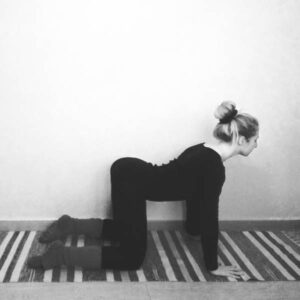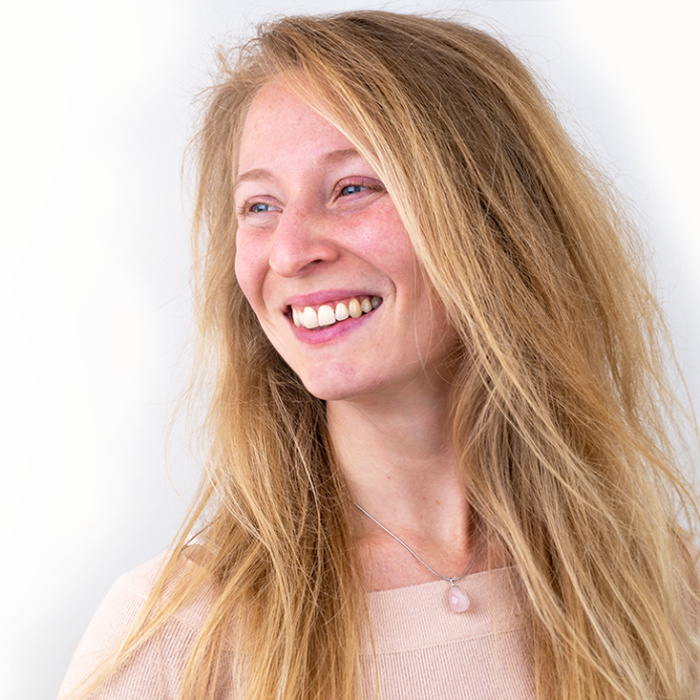Yoga Poses for Depression and Anxiety
We all know that yoga reduces stress, but did you know that yoga has been proven to be effective in reducing anxiety and depression too?
Indeed, some studies suggest that yoga is just as efficient as medication in managing depression and anxiety.
Nevertheless, when searching for yoga poses for anxiety and depression you may have come across conflicting advice.
This is because when teaching or practicing yoga for mental health, it’s not always about what we do, but about how we do it.
While some yoga exercises are obviously energizing and others are clearly calming, some practices have a different effect depending on your attitude when you practice them.
That’s why there’s no perfect sequence or something like “the best yoga poses” for depression and anxiety.
Yoga for Depression and Anxiety
While depression and anxiety are often talked about in the same breath, they may need a very different yoga sequencing approach.
Think about it. It makes sense that a person who feels lethargic and uninspired needs something different than the person who feels agitated and anxious.
And what complicates matters even more: there is not just one type of depression−nor is there only one type of anxiety.
So, if you’ve read anyone claiming to have the perfect sequence for you, take it with a grain of salt.
They either lack a more thorough education on the topic, or they are simplifying things.
It will put you face-to-face with the connectedness and oneness of body, mind, and spirit.
You’ll understand how they are related and how, by working on one, we harmonize the other.
And you’ll understand why we can’t bypass any one of them.
That all 3 need to work in synch if we want to thrive physically, emotionally, and spiritually.
Designing a Yoga Sequence for Depression and Anxiety
When designing a yoga class for depression and anxiety, our first goal is to sequence in a way that balances the nervous system.
In order to create a sequence that balances the nervous system, we need to know:
- In which way the nervous system is off balance
- The effect an exercise has on the nervous system
Depression and anxiety show up in different ways for different people. So before you pick your yoga poses (or design a class for your students) ask yourself what your/their symptoms are.
How are you/they experiencing depression?
In what way does anxiety show up for you/them?
Your answers to these questions will define the sequence of your class and the exercises you choose.
You can use this as a guideline:
- When you’re feeling depressed, heavy, and uninspired, gentle movements and small challenges can help you shift your energy and get your drive back.
- If you feel stressed, tense, and irritable, dynamic movements can help you release built-up tension and clear your mind so that you have an easier time relaxing afterward.
- Do you feel scattered, anxious, and depleted? Then slow and grounding practices can help you put yourself back together again.
Yoga Poses for Depression and Anxiety
Since we all have to start somewhere, here are 3 yoga poses that anyone with depression and anxiety can do and benefit from:

Padahastasana
The standing forward bend
- Stand with your feet hip-width apart and legs straight but relaxed.
- Take a deep breath in and as you exhale, hinge forward from your hips, keeping your spine long and chest open.
- Fold forward and place your hands on your legs, feet, or floor.
- Relax your body and mind and breathe.

Balasana
Child Pose
- Sit on your feels with the big toes touching and open your knees a little. If you like, use a bolster for support like in the picture.
- Fold forward. If you’re using a bolster to support your body, you can turn your head to the side. Otherwise, place your forehead on the floor or on your hands.


Marichasana
Cat & Cow Pose
- Place your hands shoulder-width apart and knees hip-width apart.
- Inhale, relax your spine towards the floor and look forward.
- Exhale, round your back towards the ceiling, tuck your tailbone, and bring your chin towards your chest.
- Repeat at least 5 times without pushing or pulling.

Supta Baddhakonasana
Reclining Butterfly
- Without bolster: lie on your back and bring the soles of your feet together. Let your knees open to either side and support them with blocks if needed.
- With bolster. Place a bolster behind you making sure it touches your sacrum and supports the whole of your body and head. Sit with the soles of your feet together. Let your knees open to either side and support them with blocks if needed. Tuck your tailbone and slowly recline. Make sure you’re comfortable.
Learn More ...
Learn how to teach and sequence yoga classes for depression in this online 10h Yoga for Depression TTC (Yoga Alliance Accredited).
If you’re ready to specialize and become a Yoga for Mental Health Teacher, check out our 1-year in-depth online program:

Deniz Aydoslu, MSc, E-RYT, is a criminologist and Yoga for Mental Health Teacher and teacher trainer. She researches and teaches on the intersection of embodied movement and mental health, including yoga, somatics, dance, mindfulness, and relaxation therapy. She creates soft yet powerful healing spaces where people can reconnect to their bodies, feelings, and heart so that they can live with more resilience, authenticity, and joy.
Deniz is the founder of Somatic Yoga for Mental Health and runs teacher training programs for yoga teachers and (mental) health professionals. She is a Yoga Alliance Certified Continuing Education Provider.